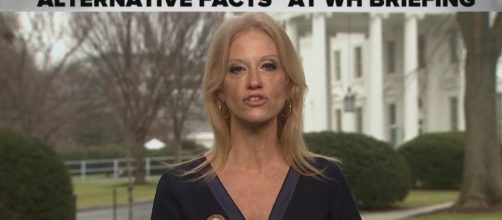The internet has become the most important news resource on the planet. It has over taken press groups to become the go-to destination for anyone who wants to know anything.
Tweeted pictures and live streams now follow actual events at the speed of fibre optic, bouncing off the atmosphere before you can say fact check.
Is this Information Utopia at last? …well if only
The problem is, a free an impartial press does not serve the powers that be and there are a few of those, but it's OK the spin merchants and hatemongers have a secret weapon...us.
For the media to destroy our free source of global information is only needs to let us poison our well.
In short we need to stop sharing crap.
I am writing this article because real news has become Fake News and fake news has become alternative facts. We live in a world where spin and propaganda are the six o'clock news, a world where yesterday, the most powerful man in the world told us to regard any polls which show him in negative light as fake news.
Guys we need to get a grip on this and we need to do it soon.
So how do you spot a fake news story?
It's actually easy and here are seven tips to prevent the flow of crud.
1. Google it – Mad though it sounds, the simple act of typing the 'my husband is a cannibal' story into Google, is enough to separate the alternative facts from the facts. For deeper analysis use Snopes.
2. Check the date and location – This year we’ve seen '60s Woodstock festival footage masquerading as pipeline protests from the summer and President Trump's media team have been caught posting the former administration's pictures of his inauguration as their own. We've been around for a long time us humans and if you spend enough time digging, you can find images to suit any headline or pretty much any idea.
3. The devil's in the details – Be careful of sensational headlines with opaque details. If there really has been an atrocity then there will be data. If the story suggests - ‘a man from a village was eaten by ISIS,'- then move along. There is enough horror in the world without people making it up.
President Trump, to name but one, needs people to be afraid of groups like ISIS and by spreading these awful tales you are only helping him and others like him. When terrible things happen, and sadly they do, records will exist. Name, age, sex and location or it didn’t happen.
4. Check the source – It's not always easy, anyone can own a domain name and stick up a slick news site and the state of the world's press makes them capable of just about anything. Try to cross reference the story. Not everyone will have bought it, so even if the BBC was stupid enough to publish it, Channel four or the Guardian might have had some reservation. When in doubt, do a deeper Google dig and see if you can find a pattern.
5. Look for bias. - It's highly unlikely that a website called Christian News is going to do a big feature on New York Gay Pride, well at least not one you'd want to share. But then you wouldn't expect Mother Jones to say any thing nice about P45 Donald J Trump.
6. Look for typos and grammar issues - Journalists are not infallible, but they should be able to string a sentence together. If a piece is full of errors, then it's unlikely to have passed the eyes of an editor.
7. Commonsense is king – We've all got built in bulls*it detectors. If something is worrying you about a story, then go with your gut and apply steps 1- 6 until you separate fact from the fiction.
That’s it... go tell the world… the truth

